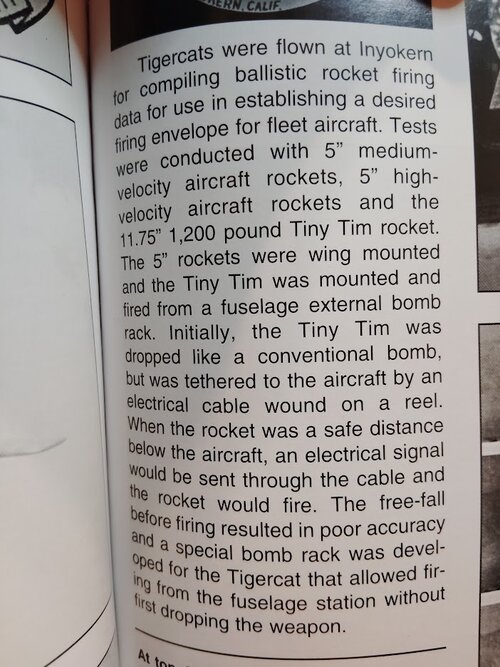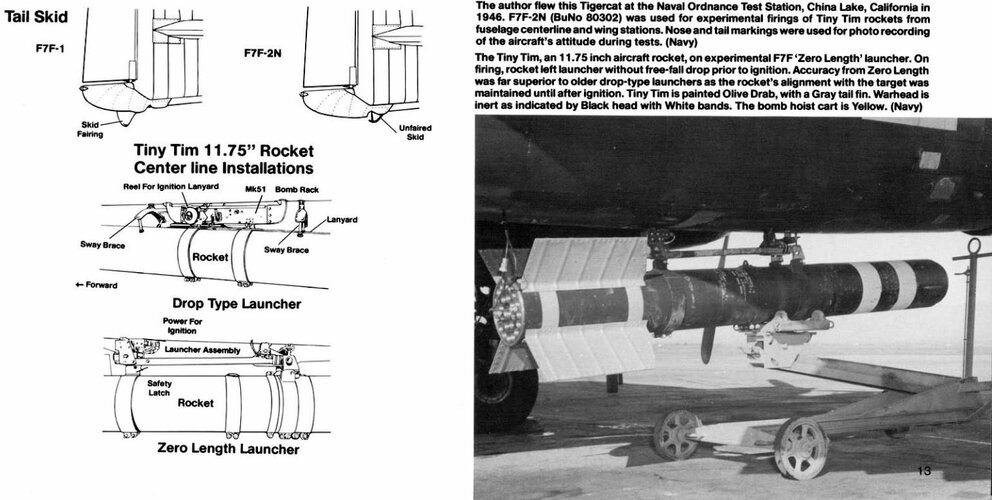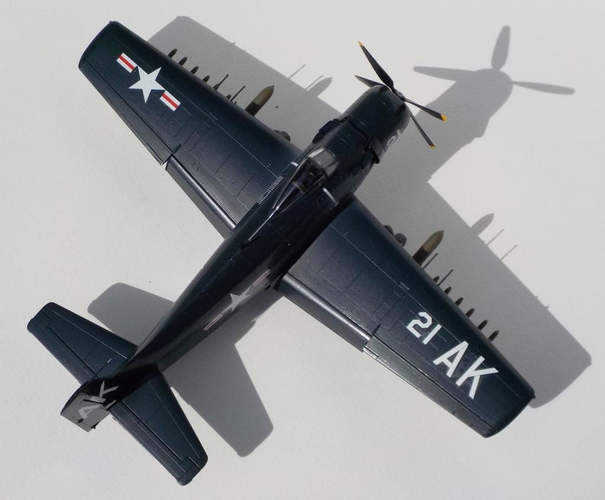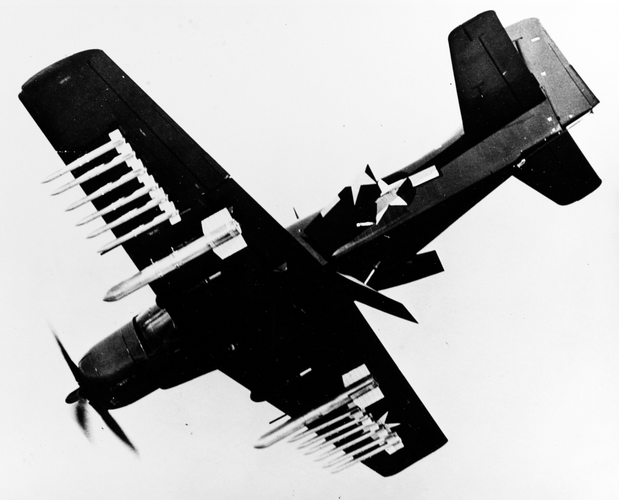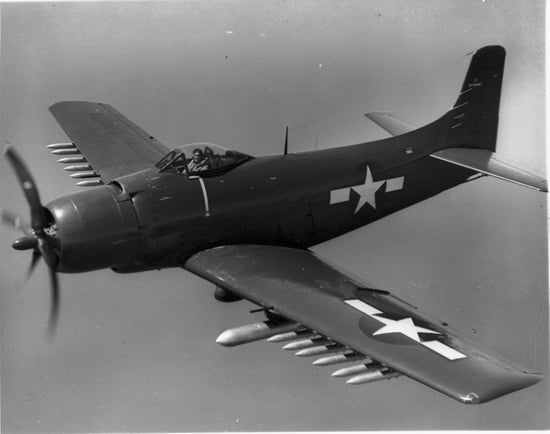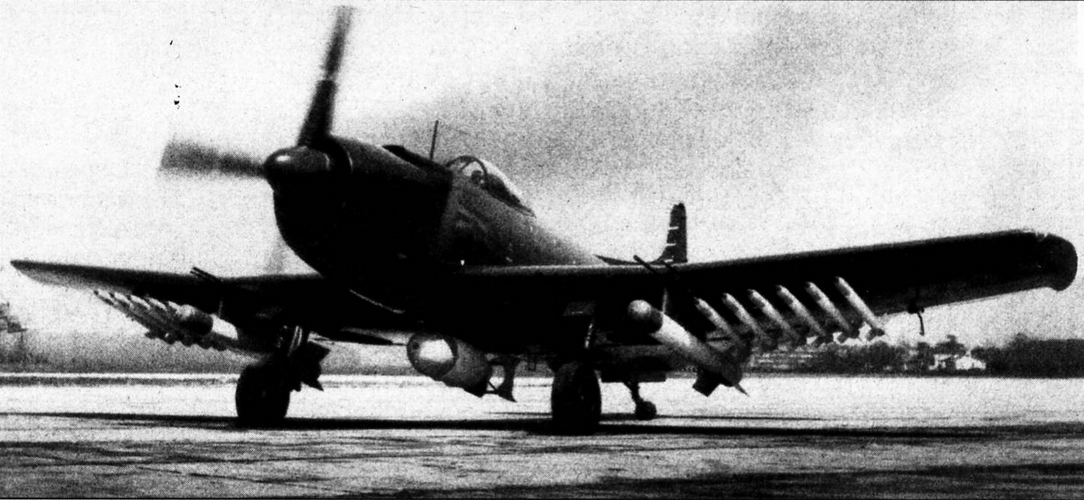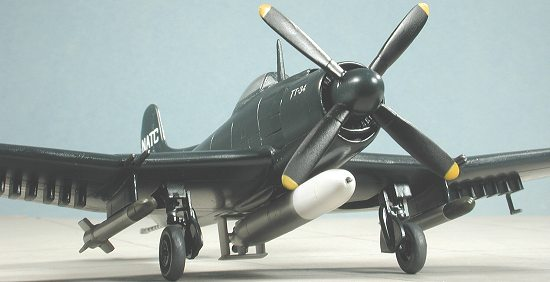On the F4U there appears to be two different launcher assemblies tested and used. The first is a release cradle type that swings the rocket down to clear the prop before release and firing. This one was used on the centerline of the fuselage as shown here:
The second type, and the one that appears to be used more operationally, is a zero-length launcher offset on the inboard wing allowing the F4U to carry two Tiny Tims.
On the TBM / TBF it appears that the cradle arm launcher was modified to fit in the bomb bay
The PBJ rack looks somewhat different than these
As far as I'm my understanding goes for all of this, the "dive-bomber" style trapeze was only used in testing for the Corsair, and the latter wing root stations as displayed was the type that saw action. The thing is, is that neither of these are the special zero-length racks as described on the Tigercat. In either footage example (2:15 for the F4U, 0:21 for the PBJ), you can see a visible drop on the rockets prior to ignition, so these aren't the described dropless, zero-length method for the F7F. Zero-length would more or less be the rocket firing right off it's rack without extra steps, which is normally not how Tiny Tims were fired.
Part of the problem with trying to do a zero-length rack for the Tiny Tim (at least, for most single-engine aircraft), is that the Tiny Tim often has to be mounted near the centerline compared to smaller rockets, that could be fitted further underwing. Because of this, they often are within the arc of the propeller if fired right off the rail, where they would risk hitting the propeller due to practical limitations with the rocket travelling within the moving prop's arc, not unlike pre-synchronization gear aircraft machine guns in WW1. This is part of the reason why they required some form of motion to displace the rocket outside of the arc prior to ignition (another reason was apparent significant stress for most airframes when the rocket ignition was fired on the rail). The method for that was initially the trapeze (following the same logic as a dive bomber dropping a bomb from a sharp angle, and needing to displace it outside of the propeller arc), then later dropping the Tiny Tim like a bomb before ignition. Smaller rockets that could be fitted underwing, like the 5" HVAR, do not suffer these limitations because they can be mounted outside of the propeller disc, and can be stabilized right after ignition without the need of a rail (which is what the RP-3 rocket commonly is seen launched from).
So in order to have a zero length launch rack for the Tiny Tim, it needs to be outside of the propeller arc. For the F7F, this would be on it's belly station, clear of either prop. The inner wing pylons presumably could not use zero-length because they would be within the arcs, and so a Tiny Tim mounted on those stations would have to be dropped beforehand. The belly station is the only unique setup in that regard on the F7F.
I would think that the PBJ would be able to fire them off without a drop with this in mind, but in the footage we see either rocket drop before ignition. It might be the structural strength problem preventing zero-length rack use if I had to guess, or some other issue.
I hope this provides more clarity on what I'm asking about. Footage where a Tiny Tim isn't dropped before ignition would be right on the money for proving than an aircraft has the type of rack that's described on the F7F. Just looking like the rack isn't enough.


